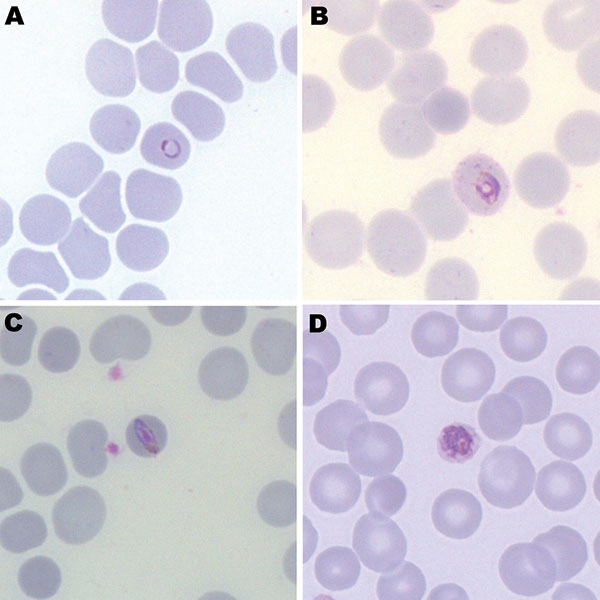Volume 16, Number 4—April 2010
Dispatch
Plasmodium knowlesi in Human, Indonesian Borneo
Figure

Figure. Giemsa-stained thin blood films of patient infected with Plasmodium knowlesi, showing a ring form (A), a trophozoite with Sinton and Mulligan stippling (B), a band form resembling P. malariae (C), and an early schizont (D). Original magnification ×100.
Page created: December 28, 2010
Page updated: December 28, 2010
Page reviewed: December 28, 2010
The conclusions, findings, and opinions expressed by authors contributing to this journal do not necessarily reflect the official position of the U.S. Department of Health and Human Services, the Public Health Service, the Centers for Disease Control and Prevention, or the authors' affiliated institutions. Use of trade names is for identification only and does not imply endorsement by any of the groups named above.